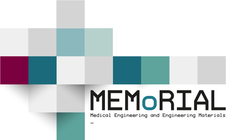Model-based reconstruction methods for CT perfusion imaging
...
M1.1b | Dynamic C-arm CT perfusion of the liver
Funding period: Mar 2019 to Jun 2022
Researcher: Hana Haseljić
Wrap-up
Keywords: angiography, dynamic liver perfusion, model-based reconstruction, prior knowledge
Background:
The liver perfusion imaging using C-arm CT as part of an interventional suite would help evaluation of tumour treatments as well as the diagnosis prior to treatments.
Objective:
To adjust the existing solutions for dynamic brain perfusion imaging to model the liver's temporal dynamics accompanying problems are addressed - liver segmentation and patient’s breathing motion.
Methods:
The model-based reconstruction should compensate for the undersampled data due to the low temporal resolution of the C-arm CBCT systems. With the time separation technique (TST), each voxel is modelled as a linear combination of basis function set in such a way that the total number of reconstructions is dependent on and equal to the number of functions forming the set. Two sets are used, the analytical and prior knowledge set extracted by applying the singular value decomposition on the reconstructed volumes of CT perfusion scans. The liver segmentation for CT and C-arm CBCT volumes is developed as a hierarchical system based on Attention U-Net. To deal with the breathing motion, the registration in reference to the first mask sweep is performed using affine transformation.
Results:
The Pearson correlation for the prior knowledge compared to the CT ground truth for the blood flow is 0.95. The lower values are examined for time to peak compared to the analytical basis. The Dice score for the liver segmentation of the CT is 0.88 ± 0.006 and of the CBCT 0.905 ± 0.007.
Conclusions:
Results indicate that the model-based reconstruction by the means of TST is a promising method.
Originality:
The assessment of the perfusion in the human liver using C-arm is not yet on the level required to be part of the standard clinical routines.






